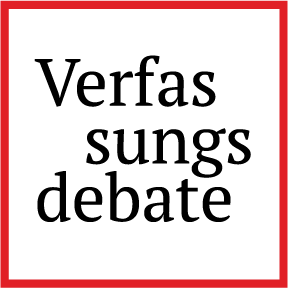Elena Izyumenko
This contribution examines the practical ways in which the human right to a healthy environment (HR2HE) can influence the development and interpretation of intellectual property (IP) laws. It focuses on two potential approaches to reconciling this human right with IP: (1) the so-called “internal” reconciliation approach, which essentially uses the HR2HE as an interpretive tool to recalibrate IP law’s own internal rules and mechanisms in a more sustainability-friendly direction, and (2) the “external” reconciliation approach, which views the HR2HE as an independent defence against IP infringement actions that can be invoked in courts to challenge allegations of IP infringement.
Continue reading >>
Charlotte Vrendenbarg
The current practice of enforcement of intellectual property rights impacts the environment in many ways. There is increasing recognition of the pressing need for more human and environmentally friendly alternative remedies, such as donating goods to charity, removing infringing signs or parts, or disposing of the goods outside the EEA/EU. The question is whether and to what extent the legal framework leaves room for ecologically sustainable alternatives to disposing of and destroying IPR-infringing goods.
Continue reading >>
Léon Dijkman
How may patent law contribute to or hinder the technologies and innovation needed to conserve a healthy environment? This brief contribution seeks to make two points in this respect. The first is that the role patent law can play on its own should not be overestimated. The second is that future studies in this direction should take an innovation systems approach. While neither point is new, I believe connecting them and building on key publications that first expressed them serves as a useful agenda for future research in this field.
Continue reading >>
Heidi Härkönen
When we talk about intellectual property (IP) and sustainability, we rarely pay attention to the moral rights of authors. However, it is important to assess these ‘authors-only’ rights in a world where copyright is often used as a tool to maximise corporate profits. In terms of sustainable development, moral rights can both promote and hinder environmental, social and cultural sustainability in the creative industries. However, their relationship with sustainable development is not straightforward. This blog post looks at some of the key issues that link the protection of moral rights in copyright to sustainable development and the circular economy.
Continue reading >>
Péter Mezei
Upcycling has become one of the trendiest buzzwords for people with a sustainability-oriented mindset. While the term might refer to various forms of recollection, improvement and reuse of data or (raw) materials, this post adopts a narrower focus. It is limited solely to reviewing how upcycling might be approached from a copyright perspective.
Continue reading >>
Irene Calboli
In recent years, upcycling has seen a surge in popularity thanks to its positive impact on sustainability and the circular economy due to consumers’ increasing attention to the environment. As a result, individuals, artisans, and small companies have enthusiastically embraced the practice as a central part of their activities and a way to reduce waste. However, with fame often comes unwanted attention, and the growth of upcycling practices has led to various legal challenges against independent upcyclers based on the argument that their products violate intellectual property (IP) rights.
Continue reading >>
Martin Senftleben
With new collections each season, the fashion industry produces a highly problematic fashion garbage heap every year. Circular economy projects seeking to produce “new” garments by reworking second hand and unsold fashion items have particular societal value against this background. Evidently, legal solutions that support fashion reuse have particular relevance in the light of these goals.
Continue reading >>
Eva Meyermans Spelmans
In the new ultra-fast fashion era, garment production cycles are accelerated to new heights, while the quality of the garments deteriorates. Key characteristics of the industry are its reliance on cheap manufacturing, overconsumption and short-lived garment use. This blog post will set out who is responsible for the protection of human rights from climate change within the textile industry. In a second step, this blog post aims to analyse the EU Strategy, focusing on the intersection between environmental and social rights in the textile industry.
Continue reading >>
Luísa Netto
The appeal to future generations as a means to legitimize climate litigation is growing. The idea of advocating for the rights of future generations is closely linked to the recognition of the human right to a healthy environment. However, this appeal – and the conceptual connection it entails –raises various questions. While protecting the planet for future generations is crucial, the legal invocation of future generations remains unclear and inconsistent.
Continue reading >>
Jasper Krommendijk
Over the last five years, there has been a noticeable turn towards human rights in climate litigation. In the same period, European climate legislation has evolved into a considerable legal framework. This warrants the question of whether there has been a similar turn to human rights before the Court of Justice of the EU – especially as Article 37 of the EU Charter of Fundamental Rights consecrates the “principle” of environmental protection.
Continue reading >>
Natalia Kobylarz
The ECtHR lacks a mandate for general measures aimed at redressing or preventing environmental harm as such. Only the introduction of the environment as the object of human rights protection, through the Right to a Healthy Environment, could trigger the necessary conceptual shift and legitimise the Court and the CoE Committee of Ministers to require member States to take measures such as mitigation of environmental risks and ecological redress.
Continue reading >>
Otto Spijkers
The recognition of a right to a clean, healthy, and sustainable environment remains contested under customary international law. Some view recent UN resolutions as evidence of its emergence, while others argue they merely reinforce existing obligations. The Human Rights Council and General Assembly have acknowledged this right, but states differ on its legal impact. As the International Court of Justice examines the issue, the focus is shifting from recognition to implementation, with institutions now working to monitor and enforce environmental human rights.
Continue reading >>
Elena Izyumenko
With the effects of climate change escalating, there has been a notable increase in discussions about the, at first glance, not obvious impact of IP protection on environmental sustainability. At the same time, considerations of human and fundamental rights in the context of IP protection are increasingly shaping the legal discourse. Given these two major trends in IP law – growing attention to environmental sustainability as well as to human and fundamental rights – it seems that the time is ripe to explore what the human right to a healthy environment might mean for IP.
Continue reading >>











